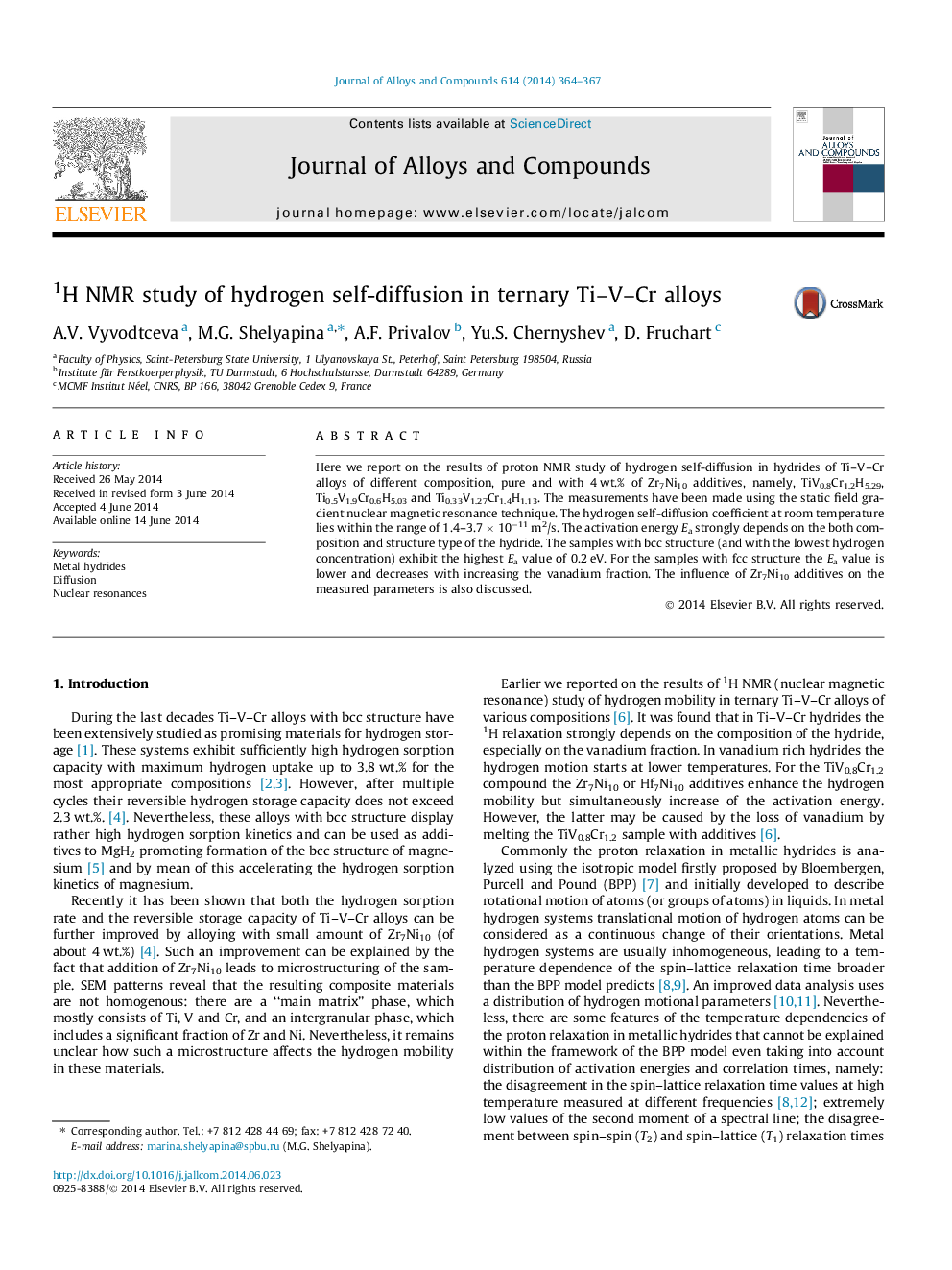| Article ID | Journal | Published Year | Pages | File Type |
|---|---|---|---|---|
| 1610583 | Journal of Alloys and Compounds | 2014 | 4 Pages |
Abstract
Here we report on the results of proton NMR study of hydrogen self-diffusion in hydrides of Ti-V-Cr alloys of different composition, pure and with 4Â wt.% of Zr7Ni10 additives, namely, TiV0.8Cr1.2H5.29, Ti0.5V1.9Cr0.6H5.03 and Ti0.33V1.27Cr1.4H1.13. The measurements have been made using the static field gradient nuclear magnetic resonance technique. The hydrogen self-diffusion coefficient at room temperature lies within the range of 1.4-3.7Â ÃÂ 10â11Â m2/s. The activation energy Ea strongly depends on the both composition and structure type of the hydride. The samples with bcc structure (and with the lowest hydrogen concentration) exhibit the highest Ea value of 0.2Â eV. For the samples with fcc structure the Ea value is lower and decreases with increasing the vanadium fraction. The influence of Zr7Ni10 additives on the measured parameters is also discussed.
Related Topics
Physical Sciences and Engineering
Materials Science
Metals and Alloys
Authors
A.V. Vyvodtceva, M.G. Shelyapina, A.F. Privalov, Yu.S. Chernyshev, D. Fruchart,
